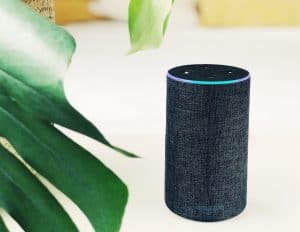Most of us have heard of, or been exposed to, some form of emerging technology in retail. Beyond the industry’s ever-increasing reliance on the internet to conduct business, retailers are racing to find, test, and adopt the latest technology to—they think—improve customer service, inventory accuracy, shrink and expenses.
One early experiment was self-checkout. It was envisioned to be a panacea for all things speed and accuracy at checkout. Volumes have been written on the subject (see: Adrian Beck’s articles), both positive and negative. But the bottom line? Both results and implementation rates have been mixed. Yes, it’s still around and seemingly successful at a number of major retailers. However, many stores are either taking it out or choosing to omit the technology in new stores.
Other retailers are experimenting with different iterations of self-checkout, such as the use of customer smartphones to “ring up” items in the aisles.
Numerous technologies are being tested by retailers around the world, all in the quest to improve customer service and the bottom line. Here are a few:
- Cashier-less stores: Think Amazon Go. Cameras and sensors record movements and selections of customers who sign up. The customer is automatically charged for their selections, and he or she is free to leave the store without interfacing with store personnel.
- Driver-less delivery: Many retailers are working hard to win the “last mile” delivery race. This is especially important to the grocery and take out food industries. Self-driving cars and drones are just a couple of examples.
- AR beauty products: Augmented reality is a technology that superimposes a computer-generated image on a user’s view of the real world. Cosmetics retailers are excited by the possibility of showing a customer an endless array of makeup and hairstyles using the customer’s own image.
- Enhanced shelf intelligence: Using robots or cameras to monitor price tags or missing items from shelves is gaining acceptance, as retailers are now able to create a real-time digital image of a physical store.
- Voice shopping assistants: Think Amazon’s Echo device. Consumers can now access a friendly voice that will do app and website searches for them. Ordering and re-ordering becomes quick and convenient.
The National Retail Federation (NRF) held its Big Show last week in New York. I wasn’t there this year but, in reading articles about the show, exhibiters were, as usual, showcasing their technologies designed to add value to retailers in a number of arenas. There were touch screens to guide customers in product selection, digital displays of all kinds, ads projected on cooler doors, in-store robots, and many more innovative ideas.
Despite the availability of imaginative new technologies, the question still remains: do consumers really want all this stuff? Scott Emmons, who until recently served as the head of Neiman Marcus Group’s innovation lab, has been quoted as saying “Technology must actually solve a problem or make things easier for the customer. Internal innovation teams, largely pressured to create PR moments, do not think long term and end up investing in short-sighted experiments that have no staying power and don’t really add value to the customer.”
One prime example of what Emmons was talking about is in-store robots. Many retail executives have long envisioned in-aisle robots who could speak to customers, help them find their products, inform them of features and then assist them with checkout.
A survey on the future of retail by Oracle NetSuite (in partnership with Wakefield Research and The Retail Doctor Bob Phibbs) regarding robotics showed there is a huge disconnect between what customers want and what retail executives think they want. Ninety-five percent of customers say they don’t want to talk to a robot, either in-store or online. Seventy-nine percent of retail executives believe that “chatboxes” are meeting consumer needs. Two-thirds of consumers disagreed with that.
Going further, the survey reveals that 79 percent of retail executives believe that artificial intelligence and virtual reality technologies could increase sales, but only 14 percent of customers thought that technology would impact their shopping decisions. (To be fair, some customers did say that self-checkout, trying clothes on in virtual reality, and mobile payments are things they would like.)
It’s obvious that there is a disconnect between what retail executives think customers want and what they actually do. Trial and error with new technologies, like self-checkout, will eventually reveal the truth. Now, more than ever, retailers need to find quick and accurate measures to find out what consumers think and invest accordingly.


